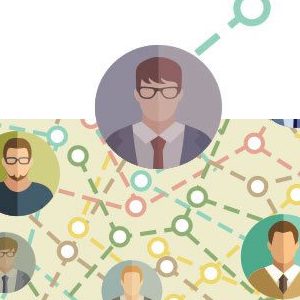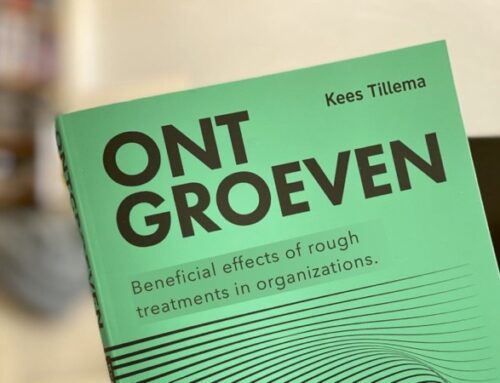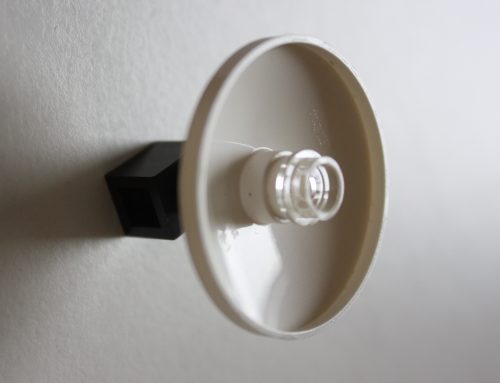I particularly enjoyed our discussion about using LEGO SERIOUS PLAY in unconventional ways to solve real world problems.
Voor de podcast ‘LSP Face to Face‘ interviewde Peter Tonge Professional Play partner Wiro Kuipers. In het gesprek dat ze voerden stonden ze stil bij Wiro’s ervaring met LEGO SERIOUS PLAY, enkele van de memorabele sessies die hij verzorgde én zijn favoriete LEGO-steentje. Ben je benieuwd? Hieronder luister je de podcast (22 minuten, Engels) of lees je wat Peter en Wiro bespraken.
Heb je geen tijd om te luisteren? Het volledige interview kun je hieronder lezen. (Scroll door naar onder de foto)
LEGO SERIOUS PLAY: WEAPONS OF MASS CREATION
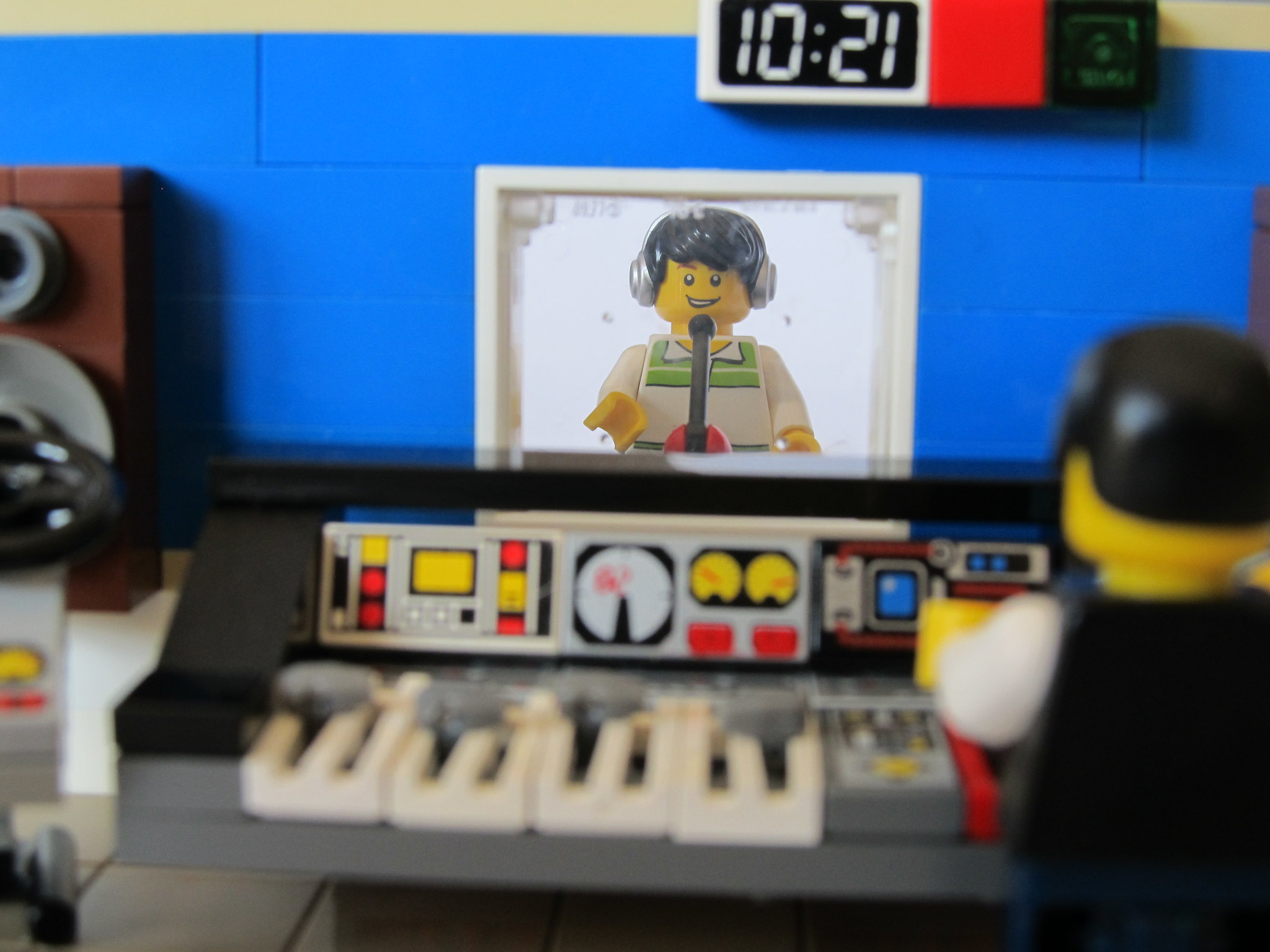
Peter Tonge: Hi Wiro. Goodmorning everyone! We’re back with the LSP Face to Face. And here is Wiro Kuipers, who is from the Netherlands. He is one of my LSP friends, and I’m going to ask him to tell us about his LSP history.
Wiro Kuipers: Thank you, Peter, that’s a cool introduction. What what do you want to know?
Peter Tonge: I’d like to know how you found it to begin with and then how you got started.
Wiro Kuipers: How I got started…
Peter Tonge: With LEGO Serious Play.
Wiro Kuipers: Well there’s… Ehm. Like the most people that live in the Netherlands I grew up playing with LEGO and somewhat later – fast forward twenty-five to thirty years – I started my own business and I arrived at a business conference somewhere in Berlin. And there was this German guy who told me that he was doing strategic consultancy (just like I did back in the days) and that there was this tool that he used that was called LEGO Serious Play. And it felt like being struck by lightning at that moment. I realized: aaah, LEGO Serious Play! I can brick back my play into my work environment. So at home I immediately looked up what this LEGO Serious Play thing was about and looked up where the trainings would be and I was lucky I could do a training I guess five or six weeks later, somewhere in Belgium with Per. And that’s about ten years ago now! It is ten years ago that I did the training and I remember that when I planned to do the training, that I mentioned that to a business relation I had at a railway company here in the Netherlands.
Peter Tonge: Okay.
Wiro Kuipers: And she was really eager to hear more of it and she offered to do a pilot session once I had finished the training. She even bought some LEGO kits already. So when I finished the training I could hop onboard at that company and that team and do a whole day team session to to get started. That’s the way it took off, about ten years ago now.
Peter Tonge: And sort of… how has it progressed from there?
Wiro Kuipers: Oh, it really has progressed! I think I was this the sixth or seventh person in the Netherlands who was trained to be a LEGO Serious Play facilitator, so my position back then was really unique and I had to convince people that this LEGO bricks were not just toys, but they were weapons of mass creation. I did loads of open workshops to introduce people to this method – people from my own network. And nowadays I I think only in the Netherlands there are two or three hundred people or so who are trained as facilitator, so the method has become more ‘common’ – I guess. In those ten years that I’ve worked with the method I’ve seen all applications pass by and I’ve seen several canvasses, and strategic interventions that we try to support with LEGO Serious Play. And some of them were helpful and some of them were less helpful. But in those ten years I I think I’ve done four to five hundred workshops now. So that’s a pretty rich experience to to build upon nowadays.
Peter Tonge: Now is that still a major part of your business, or is that become impossible now?
Wiro Kuipers: Until two months ago it was a major part of my business and then everything went into lockdown here because of COVID-19.
Peter Tonge: Sure.
Wiro Kuipers: On average I think I do about forty workshops a year and some of them are only two hours and others are two days, and this year it was kind of the same pattern. So three to four workshops in a month, but now everything has collapsed. Or at least: put forward in time or postponed for now. So I hope that my first session will be somewhere in June, and probably that will be online and the first requests for sessions later on are in my schedule for September, October. So hopefully it will get off the ground again.
Peter Tonge: Nice! Now out of your four/five hundred sessions can you tell me about one that was either a really unusual solution or something that you weren’t sure what was going to be effective on, but it really was? What surprised you?
(continued below image)
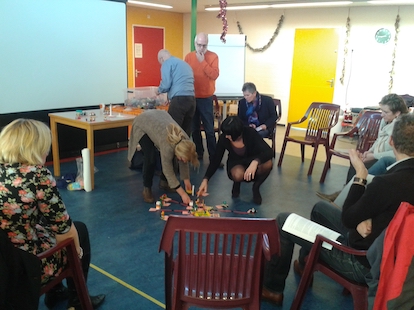
Wiro Kuipers: Well, there’s this one session that I told about during a LEGO Serious Play facilitator meet up as well, a few years ago in Billund. And that was a session we did about a multi-problem family: a family with lots of problems. With a multi-handicapped kid, a sister who has learning difficulties, a father who was always drunk, a mother who was overworked and household that was completely a mess. And… Compared to other cases this case was not about abstract issues. It was about a real family that we built out using LEGO bricks. We built the family and afterwards we built out the whole network around this family. The network of health and welfare organizations, the network of educational organizations and finally we put in the financial sources. So: which part of which organization paid for what kind of interventions and it was really mind blowing what happened there. It’s so complex – and the LEGO method really helped to clarify this complex issue and at that moment they stepped up and decided that they really wanted to clarify that and simplify situations like that for multi-problem families. So that is really cool. It was not exactly LEGO Serious Play, but it was a really serious application of LEGO.
Peter Tonge: Absolutely and it seems like a great way to get a visual representation of all the impacts on this family, right?
Wiro Kuipers: Yeah. And in no time: it only took two or three hours to get everything… not on the table – it was on the ground…we made this large kind of spider web on the floor.
Peter Tonge: And what kind of individuals or agencies did you have at the table or on the floor to be able to build that?
Wiro Kuipers: At that moment?
Peter Tonge: Yeah.
Wiro Kuipers: Well, representatives of the organizations that all played a role in the networks around in this family.
Peter Tonge: Right.
Wiro Kuipers: So they knew what they were talking about, and knew what kind of organizations pointed this family to them, and how they administered all the stuff that was happening around this family. So it were the real people involved who saw what they actually were doing.
Peter Tonge: That’s a really amazing application and something that you can almost see the immediate impact of.
Wiro Kuipers: Mmhm, yep.
Peter Tonge: It sounds like people left that room ready to change how they were doing things.
Wiro Kuipers: Yeah, and they used LEGO not to… Well, usually we use LEGO Serious Play to get people to explain abstract issues.
Peter Tonge: Yeah.
Wiro Kuipers: And like this case was not too abstract: everybody understood this family. But the case was complex. And later on I did kind of the same session, for a new bridge that that was built in Rotterdam.
Peter Tonge: Okay…
Wiro Kuipers: There we built out this bridge on the table, to see what kind of accidents could happen and what kind of interventions they could do whenever that kind of accidents will take place. So it’s a complete other situation. Not abstract at all as well, but complex – and LEGO is a way that really helps to simplify and get a simple image on the table that people can talk about and that they can play out. And I have to say I was inspired to do sessions like those by Jens Rotbøll, who mentioned that they did this dry runs for oil platform somewhere in the northern part of Denmark, I recall. But there’s different applications for that using LEGO as well.
Peter Tonge: Sure! Now I want to change gears a little bit and ask you to project into the future. What would you like to be able to do with LEGO Serious Play that you haven’t had the opportunity to do yet?
Wiro Kuipers: It would be brilliant to… I’m not sure if all the listeners of this podcast are in evenly democratic countries like the Netherlands… but here every four years we elect our new parliament and then they have to come up with their plans for the next four years. And it would be really cool and helpful and worthwhile if we can… if we could get on that level use LEGO Serious Play to make them come with the national plans for the next four years. That would be cool.
Peter Tonge: Brilliant idea!
Wiro Kuipers: That would be awesome.
Peter Tonge: And then we have something we can keep holding up going along, saying: “But you said you’re…”
Wiro Kuipers: Yeah.
Wiro Kuipers: You’re all of those different parties. The one is that liberal and the other is a social one. Or the Green Party or anything like that. and I think LEGO is a brilliant tool to bridge all those ideological gaps that are in between them to come up with something that might be a shared model for a country for the next few years.
Peter Tonge: I think that’s a brilliant idea.
Peter Tonge: So what are the other sort of things that you like to bring into your practice and do with your LEGO and that kind of thing?
Wiro Kuipers: In my LEGO workshops, you mean?
Peter Tonge: Yes.
Wiro Kuipers: Well, my intention is to make work feel like play and LEGO is a really good instrument that always helps – that brings people in a playful mood almost immediately.
Peter Tonge: Right.
Wiro Kuipers: But I always like to put in the right music and give people the opportunity to decide what music is playing and there’s always sweets, sugar, cookies needed to make it feel like a little party.
Peter Tonge: Right.
Wiro Kuipers: So I try to do everything to get people in flow and make make a session feel like a party – although there’s serious issues at stake. That’s in the workshop. And recently – last year – I did this training on experience design and what my plan was for this year (and maybe I can still do that later on) is to make my workshops more like an experience. So that I can make them start maybe two weeks earlier and expand them two weeks longer, by putting in some triggers a few weeks ahead and by confronting people with what they’ve built somewhat afterwards and extend this experience for them, so that it sticks with them and so that they can build upon all the insights that they came up with.
Peter Tonge: Can you give me an example of some sort of trigger you might do a couple of weeks ahead of time, just to get people thinking about the process of the workshop?
Wiro Kuipers: Oh, the most simple thing that I once did was just to have some LEGO parts lying around in the office, without this seeming purpose and see what people are going to do with it. Or maybe even send them a small instruction to build something at their home or to… to get this building back into their fingers and make a model with their kits or anything like that. Something that already starts the playful experience and that helps people to recognize what happens if you use your hands to arrange your thoughts. So actually: starting skills building already two weeks earlier than we’re used to.
Peter Tonge: Okay, so skillsbuilding is probably just the idea of getting your hands on the bricks, getting on comfort level.
Wiro Kuipers: Well, skills building is about getting your hands on the bricks, it’s about discovering how metaphors work, it’s discovering how story making works. Getting your hands on the bricks and see what you’re able to build with a minimum set of bricks, discover that you’re building metaphors although you didn’t know that you were doing that. That might all be things that you can do ahead of a workshop. And that you can do in this COVID-19 times as we’re in now as well. That are the things you can do long distance or virtually as well. It’s just the part of coming to an individual model that people can really take a good look at, or coming up with a shared model or landscape together, that’s difficult to do. All this individual building and even giving explanations on what you built and reflecting upon it – that are things that you could do behind your own screen or at your own desk.
Peter Tonge: Sure. You’ve been doing this for – as you said – four or five hundred workshops, so you have quite a bit of experience. As you know this podcast is going out to other LSP facilitators. For those that are starting in the practice or just starting in the field what’s the one thing they should always keep in mind as they are developing their practice or developing their workshops?
Wiro Kuipers: Well, two things, I guess. Am I allowed to mention two things?
Peter Tonge: Sure.
Wiro Kuipers: Brilliant. Well, one thing they should keep in mind is that LEGO is a method to get people coming to the same insights or coming up with new ideas. And it’s not the only method. So people that I know, my clients, they barely call me to just deliver a LEGO session. They’re looking for a solution and I use LEGO as a method that I know that is one of the most efficient and powerful ones to come up with that solution. So what it needs from me is that I know somewhat more about the industries that I’m active in, and that I know somewhat more about business thinking, design thinking… Anything that is needed to recognize the problems that we’re trying to tackle. That’s my one.
Peter Tonge: Okay. What’s your second?
Wiro Kuipers: The other one is about my own experience in the last few years. I notice that sometimes people hire me to do a part of their assignments. So: they run this event and they hire me to do this part with LEGO, or they hire me to do just a start of a project and then they take over. Or a project has started and then at a certain moment they introduce LEGO Serious Play. And I noticed that when I’m not in the driver’s seat – when I cannot decide on how you should use LEGO Serious Play, how it fits in the program and how you can come up with the right solutions – that the method loses its power.
Peter Tonge: Okay.
Wiro Kuipers: So I’ve come up with this resolution for myself that I only want to do LEGO workshops where I can have full control of everything that’s happening ahead and everything that’s happening afterwards the session.
Peter Tonge: Right. I think that is a good advice. Now this is something you and I talked about and I’m using it as my closing question: what’s your favorite LEGO brick and why?
Wiro Kuipers: Haha, oooh, I recall that I mentioned this question to you, but I forgot to think about it. Ehm. There’s one LEGO brick, actually a DUPLO brick, that I often use while introducing LEGO Serious Play. And that is the light blue transparent two by four DUPLO brick.
Peter Tonge: Yes.
Wiro Kuipers: And I use it to illustrate the relation I have with my mother in law.
Peter Tonge: Okay.
Wiro Kuipers: And it always helps, yeah. And I think it’s a beautiful brick. So when I have to choose one now by heart, then I guess that one would be it.
Peter Tonge: Okay. And dare I ask: how does that describe your relationship with your mother in law?
Wiro Kuipers: Of course you can. Well, I use it to depict that whenever I say to people that this brick illustrates the relation I have with my mother in law… that the one person thinks that this is a really transparent relation where we can build upon each other. And then another one thinks that it’s a really tough and cold relation that you could have, because of the light blue color. So people have all those images in their head of this light blue brick and whenever you don’t mention this images that you have in your head… that’s where don’t come on the same piece of paper in all the meetings that we have. So this one little brick always illustrates that we need to explain what we have in our minds and that we need to tell each other our stories to come on the same line.
Peter Tonge: All of the images all and of the angles and remembered.
Wiro Kuipers: Yep.
Peter Tonge: Makes perfect sense to me! Thank you so much. I really appreciate this. We’re gonna have some fun putting this together.
Wiro Kuipers: Cool. I really liked to be a guest on your show, so I’m really curious to how this will end up.
Peter Tonge: I really appreciate your time and I’m sure we’ll be doing some more of this. Thank you so much.


